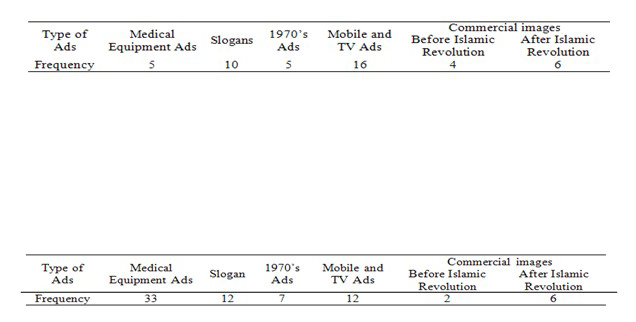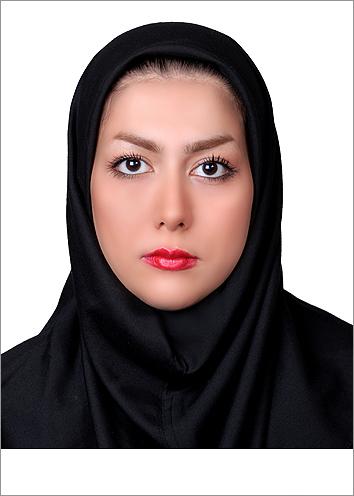July 2015 Issue
Read, Comment and Enjoy!
Join Translation Journal
Click on the Subscribe button below to receive regular updates.
Cultural Filters in Rendering Advertisements: A Case Study of Iran
- Details
- Written by Ghobadi and Rahimian

Abstract
To encourage consumers to buy products or services, advertisements play a significant role in society. With increasing imports and exports, it is crucial to translate advertisements according to consumers’ backgrounds. This study aims to analyze translation techniques applied to selected advertisements in Iran in terms of Venuti’s theory of domesticating and foreignizing, and Molina and Albir’s eighteen classifications of translation, in order to bridge the gap between theories of translation in commerce and translators’ practices. Based on these findings, most advertisements were translated into Farsi by the domestication translation procedure, and each English image in an advertisement was domesticated into a Farsi equivalent. Results of a data analysis indicate that English advertisements were translated into Farsi based on the translators’ cultural and ideological filters, so as to have impacts that are more influential on religious consumers of a specific culture.
Keywords: cultural filters, translation of advertisements, translation techniques
I. Introduction
According to contemporary researchers, culture can be defined as an interrelated and interconnected set of idiosyncratically political and ideological ways of thinking, speaking, and writing within a linguistic community. Therefore, the process and mechanics of advertising may differ from one culture or language to another. “Culture may be formally learnt or unconsciously shared” (Katan, 2011, p. 70). To translate an advertisement from one language or culture into another, the translator should consider the target consumers’ culture, their ways of living, and the dominant political and ideological reasons behind their specific shopping behaviors.
In this paper, the dominant political and ideological reasons behind translators’ specific behaviors in translating advertisements are considered in terms of being cultural filters. The present paper tries to investigate the applied cultural filters and domesticating and foreignizing translation strategies used in rendering advertising slogans, brands, and commercial images from English into Farsi.
Advertisements exist everywhere and constantly influence their audience and encourage them to buy the products or services. In other words, the purpose of an advertisement is to promote a product or service. All advertisers endeavor to attract customers and to encourage them to purchase their products. It is worth noting that “The translated advertisements should be both textually and inter-textually coherent so that the readers can understand and trust them” (Cui, 2009). In addition, when translating advertisements, there should be enough attention paid to persuasion, semiotics, and symbolism (Kappe, 2012).
According to Zhang and Li (2012), “Advertisement is not only an economic activity but also cultural exchange”. With the increasingly clear developments of imports and exports, it seems crucial to translate foreign trade advertisements according to consumers’ cultural and ideological backgrounds. Given that consideration of cultural conventions and expectations, and application of the most appropriate translation techniques seem necessary for translating advertisements, advertising texts have been widely studied from both linguistic and sociological viewpoints in the research recently conducted in the field of translation studies.
There has long been heated debate over the proper translation strategy for transmission of cultural elements. The major concerns in translation of advertising are domestication and foreignization, the two disputable cultural translation strategies proposed by Venuti (1995), which have been the focus of debate since their appearance.
In the domestication strategy, the translator transfers the source text into the target language and adjusts it to the target conventions and culture. The main purpose of this translation strategy is the receivers. Accordingly, the translator tries to recreate the effect of the original text for target reader and audience. Following this approach, translations do not read like translations, and consequently the text seems like an original text.
On the other hand, in the foreignizing strategy, the translator pays attention to the original and transfers the source text or source culture into the target language or culture. Accordingly, the translator makes readers familiar with the original culture and thought. Therefore, the target text reads like a translation.
According to Venuti (1984), foreignization involves a text, not necessarily based on the target culture, which conveys linguistic and cultural differences in the translation. Cultural differences may influence translation because of three cultural factors: Thinking habits, cultural backgrounds, and customs (Zhang & Li, 2012). In Translator’s Invisibility, Venuti (1984) advocated for the strategy of foreignization in translation. On the other hand, Venuti (as cited in Wang, 2002) agreed that, like domestication, foreignization has its own limitations. In addition, Schleiermacher (1813/1963) suggested that foreignization is the preferred method, because it underscores the foreign culture.
According to Valdés Rodríguez (2008, p. 39), “Translators should be aware of the marketing strategies which lie beneath the production of the target text”. The difficulty of translating advertisements lies in the correct rendering of their semantic and emotional meanings in the target culture, and in creating the same effect as the original text for the target customers or readers. Accordingly, the present research tries to answer the following questions through thorough analysis of the rendering of advertising slogans and commercial images from English into Farsi:
Research Question 1: Which translation strategies and techniques are most and least frequently applied in Farsi translations of English advertisements?
Research Question 2: What were the main reasons for applying specific translation techniques and strategies, according to the cultural filters and translation strategies applied by the translators?
II. Methodology and Materials
Based on Venuti’s (1995) theory of domesticating and foreignizing, and Molina and Albir’s (2002) eighteen classifications of translation techniques, this qualitative paper tries to analyze the translation techniques of selected advertisements in Iran. By doing so, this paper intends to bridge the gap between theories of translation in commerce and translators’ practices. To this end, a descriptive case study of translating English advertising texts and commercial images was undertaken using three corpora to illustrate problems, and to achieve the objectives of the present research.
Group A: Forty-three English advertising slogans, including twenty-six medical equipment advertisements, and their Farsi translations, and seventeen miscellaneous English slogans with their Farsi translations were collected from national television channels, and a medical equipment company, BNM, located in Iran. These were classified as Medical Equipment Advertisements and Slogans.
Group B: Thirty-six English advertising slogans with two Farsi translations, translated by two different translators, including eighteen 1970s English advertisements with their Farsi translations (two translations for each advertisement) and eighteen English mobile phone and television set advertisements with their Farsi translations (two translations for each advertisement).
Group C: Eighteen English commercial images with their Farsi equivalents, including ten English commercial images with their Farsi equivalents from before the Islamic revolution in Iran and eight English commercial images with their Farsi equivalents from after the revolution.
As previously mentioned, the process of rendering cultural items was the focus of this research. Foreignization and domestication, as proposed by Venuti (1995), are strategies used in analyzing advertising translations based on the coverage of socio-cultural aspects, as well as linguistic factors. The focus of this research is on the ways in which translators have treated the texts, and whether they have retained the foreign elements or changed them into conventions of the target language or culture. Moreover, cultural and ideological elements are considered as the units of translation that might be realized in the form of words, clauses, or sentences.
Given that cross-cultural and ideological differences are analyzed, this research can hopefully assist both professional and novice translators and international marketing translation experts to cope with socio-cultural differences in translating advertisements effectively into a target culture. In addition, this paper can be helpful for authors who write about translation strategies and techniques, in particular the translation of advertisements.
The present study compares English advertisements and commercial images with their Farsi translations and equivalents. Accordingly, culture-specific items of the selected source materials were selected, and their corresponding elements in the translations were examined and compared to the source text (ST), and then to each other in order to find out how they have been translated in terms of prevailing translation techniques and strategies. Therefore, this study is a descriptive, qualitative, product-oriented study.
In the present study, nine of Molina and Albir’s (2002) eighteen techniques of translation, and Venuti’s theory of domesticating and foreignizing (1995) were applied to analyze the collected data. Therefore, part of the present research is based on the following set of nine of the techniques of translating advertisements proposed by Molina and Albir (2002):
- Adaptation
- (Pure/naturalized) borrowing
- Calque
- Description
- Literal translation
- Reduction
- Transposition
- Established equivalent
- Modulation
According to Molina and Albir (2006), pure borrowing, calque, and literal translation are considered source language-oriented translation techniques, or foreignizing translation strategies. On the other hand, naturalized borrowing, adaptation, description, established equivalence, reduction, transposition, and modulation are deemed target language-oriented translation techniques, or domesticating translation strategies.
III. Data Analysis and Results
1. Adaptation: Adaptation is the replacement of an ST cultural element with an element from the target culture. For example, Molfix cheerful babies, happy families has been translated into Farsi as farzandānə šād, xānevādəhāyə šād. While there is no repetition in the SL (source language) advertisement, there is repetition in its Farsi translation, so as to attract target readers. Therefore, an adaptation technique has been applied, and domestication has occurred.
Table 1.
The Adaptation Technique Applied in Farsi Translations of English Advertisements

As shown in Table 1, adaptation was applied forty six times by the translators of all types of advertising materials. Adaptation was one of the most frequently used translation techniques for rendering English advertisements into Farsi. Translators have used this domesticating strategy more frequently that others in order to attract the target audience’s attention. To this end, the translators have utilized the linguistic and cultural devices of the target language in order to impart the intended meanings and feelings, and to make the audience buy their goods or services. Tatilon (as cited in Torresi, 2011, p. 7) believed that one should “translate not the letter but the spirit, not the words but the functions”. By using the adaptation technique, the spirits and functions of advertisements are to some extent being translated.
2. Borrowing: This translation technique refers to taking a word or expression directly from another language. Borrowing can be of two types: Pure borrowing and naturalized borrowing. Pure borrowing is that without any change. For example, the advertisement Have a Pepsi day, Pepsi has been translated into Farsi as both čə rūzĪ! bā pepsĪ and əmrūz pəpsĪ bənūšĪd . As can be seen, Pepsi, as the name of a brand of soft drink, has been borrowed from the SL in both translations. Pure borrowing has been used. Therefore, the translation has been foreignized. On the other hand, borrowing can be naturalized, so as to fit spelling rules of the target language (TL). For example, the advertisement The best to you each morning, Corn Flakes has been translated as har rūz sobh bā korn fəlks. Corn Flakes, as a brand name, has been borrowed from the SL and then naturalized according to the spelling rules of the TL. Therefore, it has been domesticated.
Table 2.
The Pure Borrowing Technique Applied in Farsi Translations of English Advertisements

As shown in Table 2, pure borrowing has been applied seventy two times by the translators. Pure borrowing was the most frequently used technique for rendering English advertisements into Farsi. The limitations of cultural and linguistic devices in the TL was the main reason for translating advertisements using pure borrowing.
It is worth noting that lack of time, interest, and expertise, and most importantly lack of creativity can, in many cases, be among the most common reasons for applying this translation strategy in Farsi renderings of English advertisements. “Creativity in translation refers to a creative use of language, one that exploits the expressive and aesthetic possibilities of language, and to the connotative meaning resulting from the cohesive relationship between the different components of the text” (Valdés Rodríguez, 2008, p. 39). In other words, a translator should be “familiar with the culture and understand the aesthetic mind of the people from different countries to lower the misunderstandings” (Zhang & Li, 2012).
Table 3.
The Naturalized Borrowing Technique Applied in Farsi Translations of English Advertisements

As shown in Table 3, naturalized borrowing was used twenty five times. In doing so, the translators borrowed SL items and then changed their spellings based on the spelling rules of the TL in order to increase readability and acceptability of the translated words or phrases.
3. Calque: A calque is a literal translation of a foreign word or phrase. A calque may be either lexical or structural. For example, the advertisement Keeps going and going and going- Energizer Batteries has been translated as pāyәdār, moγāvəm, modāvəm- batrĪ hāyə əneržĪ zā. Energizer Batteries, as a brand name, has been translated into Farsi as batrĪ hāyə əneržĪ zā. Therefore, a calque has been used in the translation, and the brand name has been domesticated.
Table 4.
The Calque Technique Applied in Farsi Translations of English Advertisements

As shown in Table 4, translators have applied the calque strategy only once. Surprisingly, calques (or loan translations) were one of the less frequently used techniques for rendering English advertising slogans and commercial images into Farsi.
4. Description:Description is the replacement of a term or expression with a description of its form and/or function. As shown in Table 5, translators never used this strategy, due to cultural filters or lack of creativity in their translations.
Table 5.
The Description Technique Applied in Farsi Translations of English Advertisements

5. Literal translation:Literal, or word for word translation isthe translation of an expression or a sentence word for word. The advertisement Open Mark 4000 MRI- Advanced image processing technique brings convenience to image storage and transmission has been translated as təknikə pĪšraftəyə pardāzəšə tasvĪr, əntəγāl va zaxĪrəyə tasvĪr rā āsān mĪkonad. As can be seen, all words have been translated literally from English into Farsi. Therefore, the translation has been foreignized. As shown in Table 6, translators used literal translation twenty three times. It is worth noting that Foreignization was the dominant strategy for translating scientific advertisements, especially medical equipment advertisements.
Table 6.
The Literal Translation Technique Applied in Farsi Translations of English Advertisements

6. Reduction: This translation technique is the suppression of a ST information item in the target text (TT). As shown in Table 7, due to their lack of creativity or lack of expertise in advertising translation, and even lack of enough time and interest, the translators never used this technique.
Table 7.
The Reduction Technique Applied in Farsi Translations of English Advertisements

7. Transposition: In this translation technique,the grammatical category of a word is changed. For example, consider the advertisement The next big thing is already here, Galaxy S III Samsung, translated as an Īzə bozorgĪ kə dar əntəzāraš būdĪd ham aknūn ĪnĴāst, sāmsong galeksĪ. As can be seen, the next big thing has been translated as bozorgĪ kə dar əntəzāraš būdĪd. Therefore, transposition has been used, and the translation has been domesticated.
Table 8.
The Transposition Technique Applied in Farsi Translations of English Advertisements

As shown in Table 8, the transposition translation technique, a domesticating strategy, has been applied four times by the translators.
8. Established equivalence:Established equivalence is the use of a term or expression recognized by dictionaries, or in use as an equivalent in the TL. For example, Life’s Good LG has been translated as zədəgĪə Īdəāl bā əl ĴĪ. The word good has been translated as Īdəāl. Therefore, an established equivalence strategy has been used. Since this technique is target language-oriented, the translation has been domesticated.
Table 9.
The Established Equivalence Technique Applied in Farsi Translations of English Advertisements

As shown in Table 9, the translators have applied established equivalence, a domesticating strategy, thirty eight times.
9. Modulation: Modulation isthe use of different phrases in the SL and TL that convey the same idea. Modulation changes the semantics and shifts the point of view of the source language. For example, the advertisement Bet you can’t eat just one Crawford’s cheddars has been translated as šart mĪbandam agə boxorĪš bāzam mĪxāy. The translator has changed the point of view in this translation. The modulation strategy has been used so as to achieve more eloquence in the target text.
Table 10.
The Modulation Technique Applied in Farsi Translations of English Advertisements

As shown in Table 10, modulation, a domesticating translation strategy, has been used seventeen times by translators who tried to reproduce the aesthetic sense of the ST in the TT.
Table 11.
Frequency of Techniques Applied in Farsi Translations of English Advertisements for Group A

As shown in Table 11, pure borrowing, a foreignizing strategy, was the most frequently applied technique in the Farsi rendering of medical equipment advertisements (Group A). On the other hand, the translators of Farsi renderings of medical equipment advertisements never used calques, reductions, or modulation. Due to the embedded technical information and technical words in this kind of advertising, it seems natural that the translators of medical equipment advertising have rendered English advertisements using foreignizing translation strategies. It is worth noting that there are not many Farsi equivalents for English technical terms within the medical equipment industry of Iran.
Table 12.
Frequency of Techniques Applied in Farsi Translations of English Advertisements for Group B

As shown in Table 12, the translators of English mobile phone and television set advertisements (Group B) never used calques, description, or reduction as translation techniques in their Farsi renderings of this kind of advertising material. According to the findings of this research, established equivalence, a domesticating translation strategy, has been the most frequently used translation technique in the Farsi renderings of English mobile phone and television advertisements (Group B).
Table 13.
Frequency of Techniques Applied in Farsi Translations of English Advertisements for Group C

As shown in Table 13, adaptation, naturalized borrowing, and literal translation have been applied in Farsi renderings of English commercial images. Among these four translation techniques, adaptation was the most frequently used strategy. It must be mentioned that the translators never used calques, description, reduction, transposition, established equivalence, or modulation.
Foreignization was the most frequently used translation procedure for rendering English commercial images into Farsi. Surprisingly, in this study, 45.71% of commercial images were foreignized, while 54.29%were domesticated.
Due to cultural and ideological filters, and obstacles in Iranian culture and the Farsi language, translators have attempted to render English commercial images into Farsi by using domesticating translation strategies. To this end, translators were mostly euphemizing words and images used in English advertisements that are taboo in the Farsi language or in Iranian Islamic culture. By doing so, translators tried to attract their audience’s attention while avoiding arousing and stimulating their cultural and ideological sensitivities and avoiding negative feedback. As shown in Table 13, it is worth noting that the translators of commercial images in this study never used calques, description, reduction, transposition, established equivalence, or modulation. Calzada (2011, as cited in Torresi, 2011, p. 8) believed that “images need translating as much as words.”
Advertisers endeavor to attract customers’ attention and encourage them to purchase a product or service. To do so, rhetorical figures are sometimes used, so as to have specific effects on potential consumers. In fact, the translator’s task, when translating advertising slogans and commercial images, is to ascertain, and then apply, the appropriate strategies to reach this goal. In the translation of advertisements, both the source and target texts are part of the same marketing campaign and production process (Valdes, 2004).
Table 14.
Translation Strategies Applied in Farsi Translations of English Advertisements in All Three Groups

As shown in Table 14, two hundred and twenty translation techniques were applied by translators in translating both advertising slogans and commercial images. As shown in Figure 1 and Table 14, one hundred and twenty-six translation techniques (57.57%) were target-oriented, or domesticated, and ninety four translation techniques (42.73%) were source-oriented, or foreignized.
Figure 1. Domesticating and foreignizing strategies applied in translation of advertisements.
All translation strategies have both positive and negative aspects. The domesticating approach is perhaps more appropriate in marketing and advertising translation. This strategy may encourage customers to purchase goods of certain brands. Therefore, in the translation process, the translator should take into account the target culture, and make alterations so as to make the translation intelligible. In other words, translators should clarify the differences between their own culture and the target language culture by consensus (Zhang & Li, 2012).
IV.Conclusion
In many cases, translation of advertisements seems to be a challenge in a specific culture and in a religious country. The paramount tasks of translator are to eliminate cultural and ideological contradictions, and to facilitate communication in reading and understanding a text. The present paper tries to elaborate on the translation techniques and strategies applied in rendering English advertisements into Farsi. Based on the obtained results and data analysis, English advertisements were mostly translated into Farsi based on Iranian translators’ cultural filters and/or backgrounds, in order to have impacts that are more impressive and effective on the religious consumers of a specific culture in Iran.
Due to certain cultural and ideological filters present in Iran, domesticating translation strategies can be more appropriate in marketing and advertising translation. In many cases, one may conclude that most of the translators were restricted or even suppressed by their own cultural filters, in the Farsi language, or the Islamic culture of Iran. Therefore, translators were applying mostly domesticating strategies. “There are various restrictions for advertising, including people’s habits and customs, religion and beliefs, morals and ethics, laws in the target place, and linguistic or stylistic requirement” (Cui, 2009). It is worth noting that foreignizing translation strategies were used due to lack of time and interest, and lack of enough effective knowledge, expertise, and even creativity.
References
Kappe, C. F. (2012). The translation of advertisements: Issues of semiotics, symbolism, and persuasion. (Unpublished master’s thesis). University of the Witwatersrand, Johannesburg, South Africa.
Cui, Y. (2009). The goal of advertisement translation: With reference to C-E/E-C advertisements. Journal of Language & Translation, 10(2).
Katan, D. (2011). Culture. In M. Baker and G. Saldanha (Eds.), Routledge encyclopedia of translation studies (pp.70-73). London, England: Routledge.
Molina, L., & Albir, A. H. (2002). Translation techniques revisited: A dynamic and functionalist approach. Meta: Journal des Traducteurs, 47(4), 498-512.
Rahimian, P. (2013). A study of Farsi translations of English commercial advertisements based on the Venuti’s domestication and foreignization theory (Unpublished master’s thesis). Islamic Azad University South Tehran Branch, Iran.
Schleiermacher, F. (1963). Ueber die verschiedenen Methoden des Uebersezens. In H. J. Störig (Ed.), Das Problem des Übersetzens (pp. 38–69). Stuttgart: Henry Goverts Verlag. (Original work published 1813)
Torresi, I. (2011). Advertising. In M. Baker and G. Saldanha (Eds.), Routledge encyclopedia of translation studies (pp.6-10). London, England: Routledge.
Valdés Rodríguez, M. C. (2008). Creativity in advertising translation.. Quaderns de Filologia: Estudis Literaris, 13, 37-56.
Valdés, C. (2004). La traducción publicitaria: Comunicación y cultura. Universitat de València.
Venuti, L. (1995). The translator’s invisibility: A history of translation. London, England: Routledge.
Venuti, L. (1998). Strategies of Translation. In M. Baker (Ed.), Routledge encyclopedia of translation studies (pp. 240–244). London, England: Routledge.
Wang, D. (2002). Domestication and foreignization: A contradiction? China Translation 9, 24–26.
Zhang, Z., & Li, L. (2012). Effects of cultural differences on advertising translation. Lecture Notes in Information Technology, 16-17.

